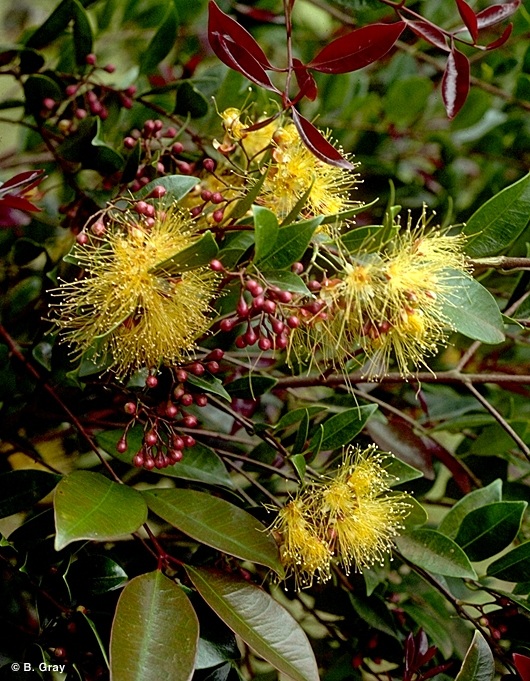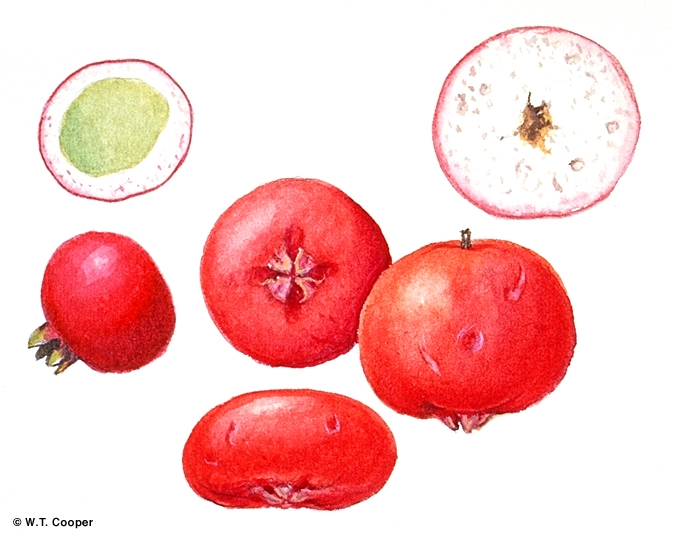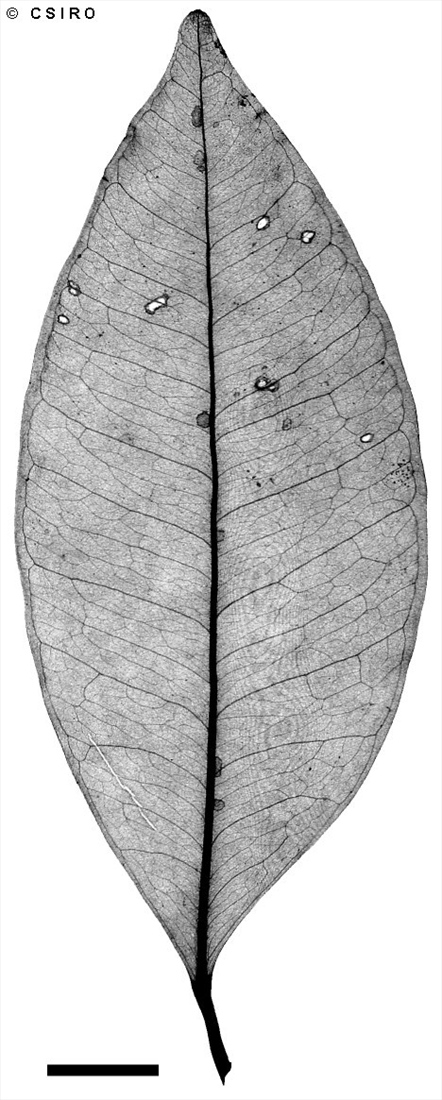Australian Tropical Rainforest Plants - Online edition
Syzygium fibrosum (F.M.Bailey) T.G.Hartley & L.M.Perry






Hartley, T.G. & Perry, L.M. (1973) Journal of the Arnold Arboretum 54: 201.
Apple, Small Red; Small Red Apple; Satinash, Fibrous; Satinash, Bamaga Fibrous; Bamaga Fibrous Satinash; Apricot Satinash; Satinash, Apricot; Fibrous Satinash
Seldom exceeding 30 cm dbh.
Bracts often present at anthesis. Calyx tube (hypanthium) + pedicel about 5-9 mm long, calyx tube (hypanthium) about 3-5 mm diam., calyx lobes +/- uniform, triangular to narrowly triangular, about 4-5 mm long. Petals spathulate, lanceolate or +/- orbicular, about 6-7 x 2-3 mm when spathulate, slightly wider when orbicular, oil dots visible, about 30-50 per petal. Outer staminal filaments about 15-25 mm long, anthers about 1 x 0.7 mm, gland terminal, reasonably conspicuous. Ovules 10-18 per locule, placentas central, ovules radiating, ascending. Style about 18-30 mm, approximating the stamens.
Fruits globular or depressed globular, about 10-16 x 18-21 mm, calyx lobes persistent, about 4-5 mm long, pericarp fleshy, slightly fibrous. Seeds solitary, about 10 x 12 mm along the longer diameter, testa adhering to the pericarp but free from the smooth surface of the uniformly textured, shortly petiolate cotyledons. Radicle basal, cotyledonary stipules present but not obvious.
Occurs in NT, CYP, NEQ and CEQ. Altitudinal range from sea level to 450 m. Grows as an understory tree in well developed rain forest, particularly the drier, more seasonal rain forest and gallery forest. Also occurs in New Guinea and the Aru Islands.
This species has excellent potential and is slowly gaining a place in horticulture. Selected forms produce masses of cream to yellow or brownish flowers which attract birds followed by bright pink or red fruits in profusion.
This species has no commercial value and does not grow large enough to produce useful logs. Wood specific gravity 0.81. The fruits are edible and have been used to make jam and tarts but not in commercial quantities. Hyland (1983).





